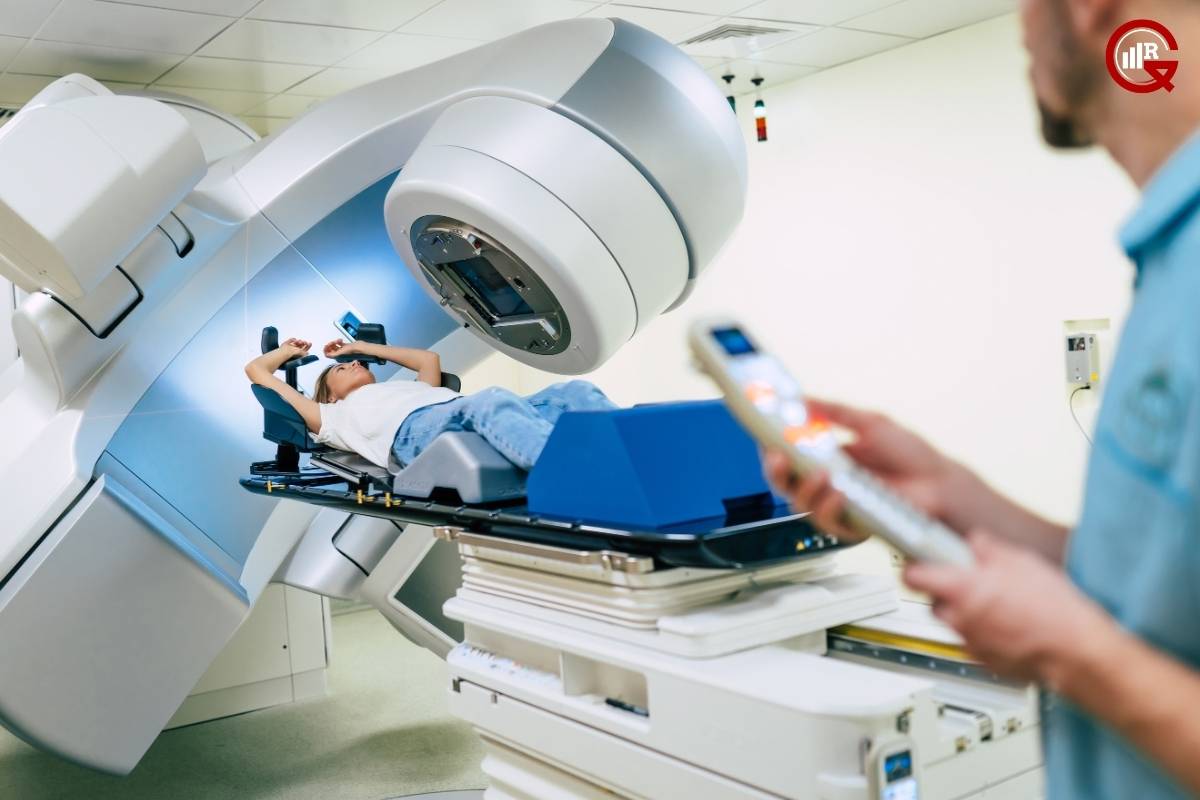Cancer remains one of the most formidable challenges in modern medicine, with its early detection crucial for successful treatment outcomes. Over the years, significant strides have been made in diagnostics, empowering clinicians with sophisticated tools and techniques to detect cancer at its earliest stages. This article explores the latest advancements in cancer diagnostics, highlighting the innovative approaches that are revolutionizing detection and treatment strategies.
Understanding Cancer Diagnostics:
Cancer Analysis encompass a range of methods and technologies aimed at detecting cancer, determining its type, and assessing its severity. These diagnostics play a pivotal role in guiding treatment decisions, monitoring disease progression, and evaluating treatment response. Traditionally, cancer analysis relied on imaging modalities such as X-rays, computed tomography (CT), and magnetic resonance imaging (MRI), as well as tissue biopsy for histopathological examination. While these methods remain essential, recent advancements have introduced novel approaches that offer greater sensitivity, specificity, and non-invasiveness.
Advancements in Cancer Diagnostics:

Liquid Biopsies:
Liquid biopsies have emerged as a revolutionary approach to cancer investigation, offering a minimally invasive alternative to traditional tissue biopsies. These tests analyze various biomarkers, including circulating tumor cells (CTCs), circulating tumor DNA (ctDNA), and extracellular vesicles, present in bodily fluids such as blood, urine, and saliva. Liquid biopsies provide valuable insights into tumor heterogeneity, treatment response, and disease progression, enabling clinicians to tailor therapies to individual patients. Moreover, liquid biopsies hold promise for early cancer detection, as they can detect molecular changes associated with cancer before symptoms manifest or tumors become detectable by imaging.
Genomic Profiling:
Genomic profiling involves analyzing the genetic alterations present in cancer cells to identify specific mutations, gene amplifications, and chromosomal rearrangements. Next-generation sequencing (NGS) technologies have revolutionized genomic profiling, allowing researchers to comprehensively characterize the cancer genome with unprecedented speed and accuracy. By identifying targetable genetic aberrations, such as oncogenic mutations or gene fusions, genomic profiling guides the selection of targeted therapies and personalized treatment regimens. Furthermore, genomic profiling facilitates the identification of biomarkers for predicting treatment response and prognosis, paving the way for precision oncology.
Artificial Intelligence (AI) and Machine Learning:
AI and machine learning algorithms are transforming cancer analysis by analyzing vast amounts of clinical and molecular data to identify patterns and make accurate predictions. These algorithms can analyze medical images, genomic data, and electronic health records to assist clinicians in diagnosing cancer, predicting patient outcomes, and optimizing treatment strategies. For example, AI-based image analysis algorithms can detect subtle abnormalities in radiological images that may indicate the presence of cancer, improving diagnostic accuracy and efficiency. Similarly, machine learning models trained on genomic data can predict tumor behavior and response to treatment, guiding clinical decision-making and enhancing patient care.
Multiplexed Imaging Technologies:

Multiplexed imaging technologies enable simultaneous visualization of multiple molecular targets within tissue samples, providing comprehensive insights into tumor biology and microenvironment. Techniques such as immunohistochemistry (IHC), fluorescence in situ hybridization (FISH), and mass spectrometry imaging (MSI) allow researchers to study the spatial distribution of proteins, nucleic acids, and metabolites in tumor tissues with high resolution. Multiplexed imaging facilitates the characterization of tumor heterogeneity, immune cell infiltration, and biomarker expression patterns, which are critical for personalized treatment approaches and predictive biomarker discovery.
Future Directions and Challenges:
Despite the remarkable progress in cancer diagnostics, several challenges remain to be addressed. These include the need for standardization and validation of novel diagnostic tests, the integration of multi-omic data for comprehensive molecular profiling, and the optimization of AI algorithms for clinical use. Furthermore, ensuring equitable access to advanced diagnostic technologies and addressing disparities in cancer care are essential for improving patient outcomes and reducing healthcare disparities.
Looking ahead, the future of cancer diagnostics holds immense promise with ongoing research and technological advancements. Integrated multi-omic approaches, combining genomic, transcriptomic, proteomic, and imaging data, will provide a more holistic understanding of cancer biology and enable personalized treatment strategies. Moreover, the development of point-of-care diagnostic devices and telemedicine platforms will expand access to cancer diagnostics in underserved communities and remote regions.
Metabolomics:
Metabolomics, the study of small molecule metabolites in biological systems, is gaining prominence in cancer diagnostics. Metabolic profiling provides valuable insights into the metabolic alterations associated with cancer development and progression. By analyzing the metabolic signatures of tumors, researchers can identify biomarkers for early detection, monitor treatment response, and predict patient outcomes. Metabolomics also offers the potential to uncover novel therapeutic targets and develop metabolic-based therapies for cancer treatment.
Circulating Tumor Cells (CTCs) Analysis:
The analysis of circulating tumor cells (CTCs) holds promise for non-invasive cancer diagnostics and monitoring. CTCs are cancer cells that have shed into the bloodstream from primary tumors or metastatic sites. By capturing and analyzing CTCs from peripheral blood samples, clinicians can obtain real-time information about tumor dynamics, metastatic potential, and treatment resistance. CTC-based assays offer a minimally invasive approach to monitor disease progression, detect minimal residual disease, and guide treatment decisions in cancer patients.
Microbiome Analysis:
The human microbiome, consisting of trillions of microorganisms inhabiting the body, plays a crucial role in health and disease, including cancer. Recent studies have revealed associations between alterations in the microbiome and various cancer types, suggesting its potential as a diagnostic tool. Microbiome analysis involves characterizing the composition and function of microbial communities in different anatomical sites, such as the gut, skin, and oral cavity. By profiling the cancer-associated microbiome, researchers aim to identify microbial biomarkers for early detection, assess cancer risk, and modulate the microbiome to improve treatment outcomes.
Liquid Biopsy-based Early Detection:

Liquid biopsy-based approaches for early cancer detection are gaining traction as promising screening tools for population-based cancer screening programs. By analyzing circulating biomarkers such as ctDNA, CTCs, and exosomes, liquid biopsies can detect cancer at its earliest stages, when treatment is most effective. These minimally invasive tests offer advantages over traditional screening methods, including ease of sample collection, lower costs, and reduced patient discomfort. Liquid biopsy-based screening holds the potential to revolutionize cancer prevention and improve survival rates by enabling early intervention and personalized treatment strategies.
Integration of Digital Health Technologies:
The integration of digital health technologies, such as wearable devices, mobile applications, and remote monitoring platforms, into cancer diagnostics is enhancing patient engagement and data collection. These technologies enable continuous monitoring of patient health parameters, including physical activity, vital signs, and symptomatology, which can provide valuable insights into disease progression and treatment response. Moreover, digital health tools facilitate remote consultations, telemedicine visits, and patient education, improving access to cancer care and enhancing patient-centered approaches to diagnosis and management.
Conclusion:
Advancements in cancer diagnostics are reshaping the landscape of cancer care, offering new opportunities for early detection, personalized treatment, and improved patient outcomes. From liquid biopsies and genomic profiling to AI-driven analysis and multiplexed imaging, these innovations hold the potential to transform cancer diagnosis from a one-size-fits-all approach to a precision medicine paradigm. By leveraging these cutting-edge technologies and addressing existing challenges, we can continue to make significant strides in the fight against cancer, ultimately saving lives and improving the quality of life for patients worldwide.






